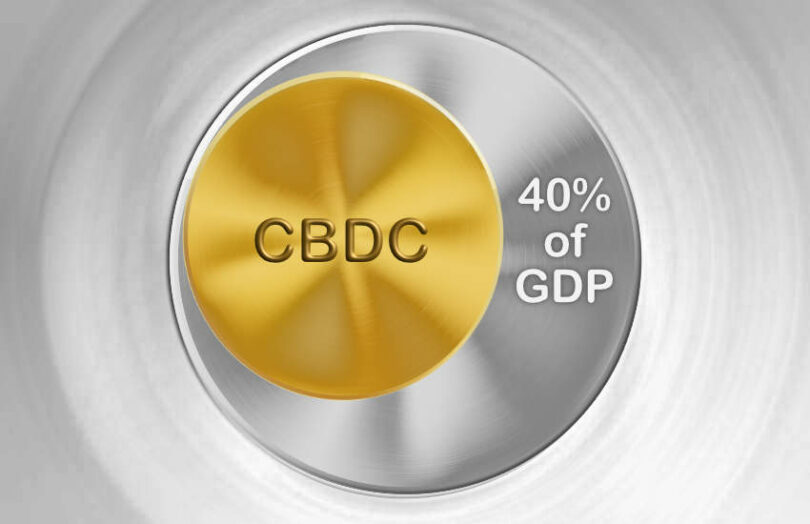BIS economists conducted macroeconomic research on the potential impact of introducing a retail central bank digital currency (CBDC), arguing that the optimal level for CBDCs will be with a rate of issuance of 40% of Gross Domestic Product (GDP). This is a massive figure compared to what most central banks are currently debating, but the paper claims that this could bring significant macroeconomic and financial stability gains in the long run.
The report found that with a rate of issuance of 30% of GDP, a CBDC could add almost 6% to a country’s output and see welfare gains of over 2%. Contrary to popular belief, the authors suggest that introducing a digital currency could enhance countries’ financial stability, with banks’ balance sheets growing in the long run and the average cost of funding remaining constant. Additionally, CBDCs could complement existing monetary and fiscal policy rules, helping to stabilize inflation and output during financial shocks.
However, the authors argue that the optimal policy outcomes come at an even higher rate of 40% of GDP. This level of CBDC issuance is significantly higher than any currently proposed caps. For example, it is almost four times the digital euro cap being debated, which a 2021 Morgan Stanley report found to lead to €873 billion in lost bank deposits.
Nonetheless, this high figure is because the researchers do not anticipate consumers holding the majority of CBDCs. Their model predicts an overnight increase in the stock of CBDCs of up to 30% of GDP, with only a 6% drop in commercial bank deposits. The difference is that banks switch a sizable proportion of their government bond holdings into CBDCs. In fact, the paper predicts that bank deposits will recover their levels within six years and grow by 21.5% longer term.
From the government’s perspective, the central bank’s increased holding of government bonds representing 30% of GDP means it’s the dominant bondholder.
CBDC and financial stability
One of the main concerns when it comes to retail CBDCs is that in a crisis, many people might switch their bank deposits to CBDCs, increasing the risk of potential bank runs. The authors suggest that switching between CBDC and bank money should be discretionary so that this can be controlled (throttled) during crises to prevent massive flights to the digital currency.
One last important assumption related to the architecture and design features of the CBDC is related to remuneration. The authors support offering a real interest rate that is half a percent lower than the central bank deposit rate. However, the report does not mention how this would compare to commercial bank deposit rates. For example, today, banks are offering a significantly lower rate on deposits.
Incentives / disincentives for governments and central banks
Based on the BIS model, right now is not a good time to introduce a retail CBDC. That’s because it predicts a CBDC will result in a surge in inflation of 3% in the near term but could suppress price increases longer term.
Many governments are in uncharted territory with historic levels of government debt, so higher inflation increases the cost of their financing. However, longer term, it will make it cheaper in real terms, with the model showing a drop in the real interest rate on government debt from 3% to 2.4%. The real interest rate on CBDC is predicted to fall from 3% to 0.4%. But these real rates don’t account for that initial inflationary bump.






